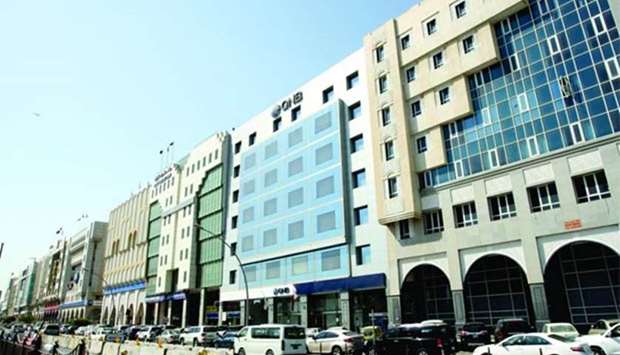Qatari banks have “sufficient cushion” to accommodate further real estate credit, according to a Qatar Central Bank report.
The Net Mortgage Risk Ratio for the local banks stood at 114.17% as against the QCB-stipulated maximum limit of 150% as of December 2017, the QCB said.
The Net Mortgage Risk Ratio is calculated as “net mortgage as a proportion of the bank’s total capital and reserve.”
In order to assess the credit risk from mortgage loan in Qatar, the QCB had conducted stress test by assuming stressed scenarios like fall in value of collateral by various percentage levels while banks would require to make provision for the same.
The NPL level at which CAR fell below threshold indicated the level of resiliency (or vulnerability) of the credit portfolio of the banks. On a year-on-year comparison, it was observed that banks were more resilient and their respective capital positions allowed them to withstand fall in the collateral value by a higher percentage in December 2017 compared to December 2016.
According to the QCB, credit risk from mortgage loan arise when the borrower is unable to repay the credit extended where real estate properties are taken as collateral.
A fall in the value of real estate collateral held by the banks exposes the banks to uncovered loans. In such a scenario, it said banks are required to make additional provision, which impacts their capital adequacy.
Credit to the real estate sector holds a major share of the private sector credit, the QCB said in its 9th Financial Stability Review. The price changes in the real estate are measured through Real Estate Price Index (REPI). REPI provides an insight into the demand side of the real estate market.
With demographical changes and changes in supply side dynamics, Qatar’s real estate market showed decline in price level during 2017. In this context, an assessment on the real estate credit portfolio of banks is made.
The report shows that Qatar's banking sector enjoyed the lowest non-performing loan (NPL) ratio among its GCC peers.
Along with low NPL ratios, the sector’s coverage ratio is high; indicating risk from credit default can be mitigated without having any impact on its solvency.
Amidst this positive footing, the current year experienced some increase in nonperforming loans at an aggregate level.
The decline in credit quality though marginal, observed across all the economic sectors, except from the public sector. NPL from individuals increased significantly during the year.
The slippage ratio (fresh accretion to NPLs during the year to standard credit at the beginning of the year) increased from -.04% to 0.37% in 2017.
The QCB report said the increase in nominal growth in non-performing loan as well as slippage ratio warrants banks to proactively manage their NPLs.
The Net Mortgage Risk Ratio is calculated as “net mortgage as a proportion of the bank’s total capital and reserve.”
In order to assess the credit risk from mortgage loan in Qatar, the QCB had conducted stress test by assuming stressed scenarios like fall in value of collateral by various percentage levels while banks would require to make provision for the same.
The NPL level at which CAR fell below threshold indicated the level of resiliency (or vulnerability) of the credit portfolio of the banks. On a year-on-year comparison, it was observed that banks were more resilient and their respective capital positions allowed them to withstand fall in the collateral value by a higher percentage in December 2017 compared to December 2016.
According to the QCB, credit risk from mortgage loan arise when the borrower is unable to repay the credit extended where real estate properties are taken as collateral.
A fall in the value of real estate collateral held by the banks exposes the banks to uncovered loans. In such a scenario, it said banks are required to make additional provision, which impacts their capital adequacy.
Credit to the real estate sector holds a major share of the private sector credit, the QCB said in its 9th Financial Stability Review. The price changes in the real estate are measured through Real Estate Price Index (REPI). REPI provides an insight into the demand side of the real estate market.
With demographical changes and changes in supply side dynamics, Qatar’s real estate market showed decline in price level during 2017. In this context, an assessment on the real estate credit portfolio of banks is made.
The report shows that Qatar's banking sector enjoyed the lowest non-performing loan (NPL) ratio among its GCC peers.
Along with low NPL ratios, the sector’s coverage ratio is high; indicating risk from credit default can be mitigated without having any impact on its solvency.
Amidst this positive footing, the current year experienced some increase in nonperforming loans at an aggregate level.
The decline in credit quality though marginal, observed across all the economic sectors, except from the public sector. NPL from individuals increased significantly during the year.
The slippage ratio (fresh accretion to NPLs during the year to standard credit at the beginning of the year) increased from -.04% to 0.37% in 2017.
The QCB report said the increase in nominal growth in non-performing loan as well as slippage ratio warrants banks to proactively manage their NPLs.




